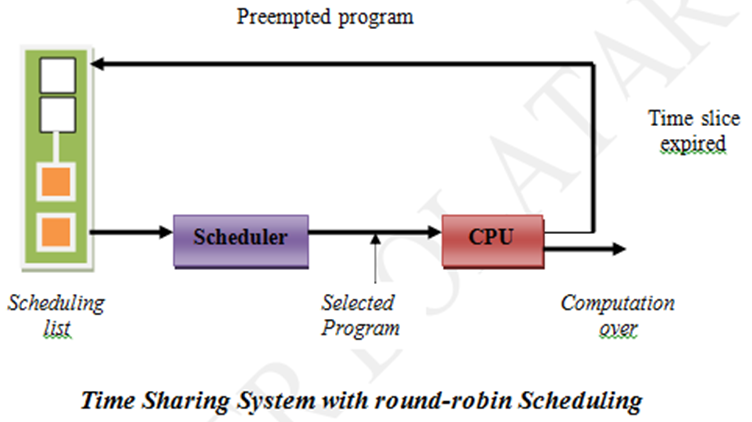- In a non-interactive computing environment, a user has no direct contact with his program during its execution. Multi programming and batch operating system provides such environment where the various system resources are utilized effectively but it does not provide user interaction with computer resource.
- In an interactive environment, a user can provide input to a program from the keyboard and examine its output on the monitor screen. Time sharing system offers such interactive environment to the user.
- In this system each user has assigned equal time slots. When the user gets his turn, he can initiate request and examine results. When the time slot for the first user has completed, another users receives the control to initiate his request and so on. If request of any user does not completed during his time slice, he needs to wait for his next turn. This paradigm is called time sharing.
- Time sharing is a logical extension of multi-programming. The CPU executes multiple jobs by switching among multiple users but the switches occur so frequently that the user can interact with each program while it is running.
- The response time should be short typically in the range of fraction or seconds. Time-shared operating system allows any user to share computer simultaneously. Since each action or command in this type of operating system tends to be short, only a little CPU time is needed for each user.
- The system switches so rapidly from one user to next that it creates an illusion in user’s mind that entire computer system is dedicated to him only.
- Round-robin Scheduling: When a user makes a request to his program, the program is added to the end of a scheduling list. The scheduler removes first program from the list and gives the CPU to it. When it completes the request, next program gets its turn. When the user makes another request, the program is once again added to the end of the scheduling list. This is called round –robin scheduling.

